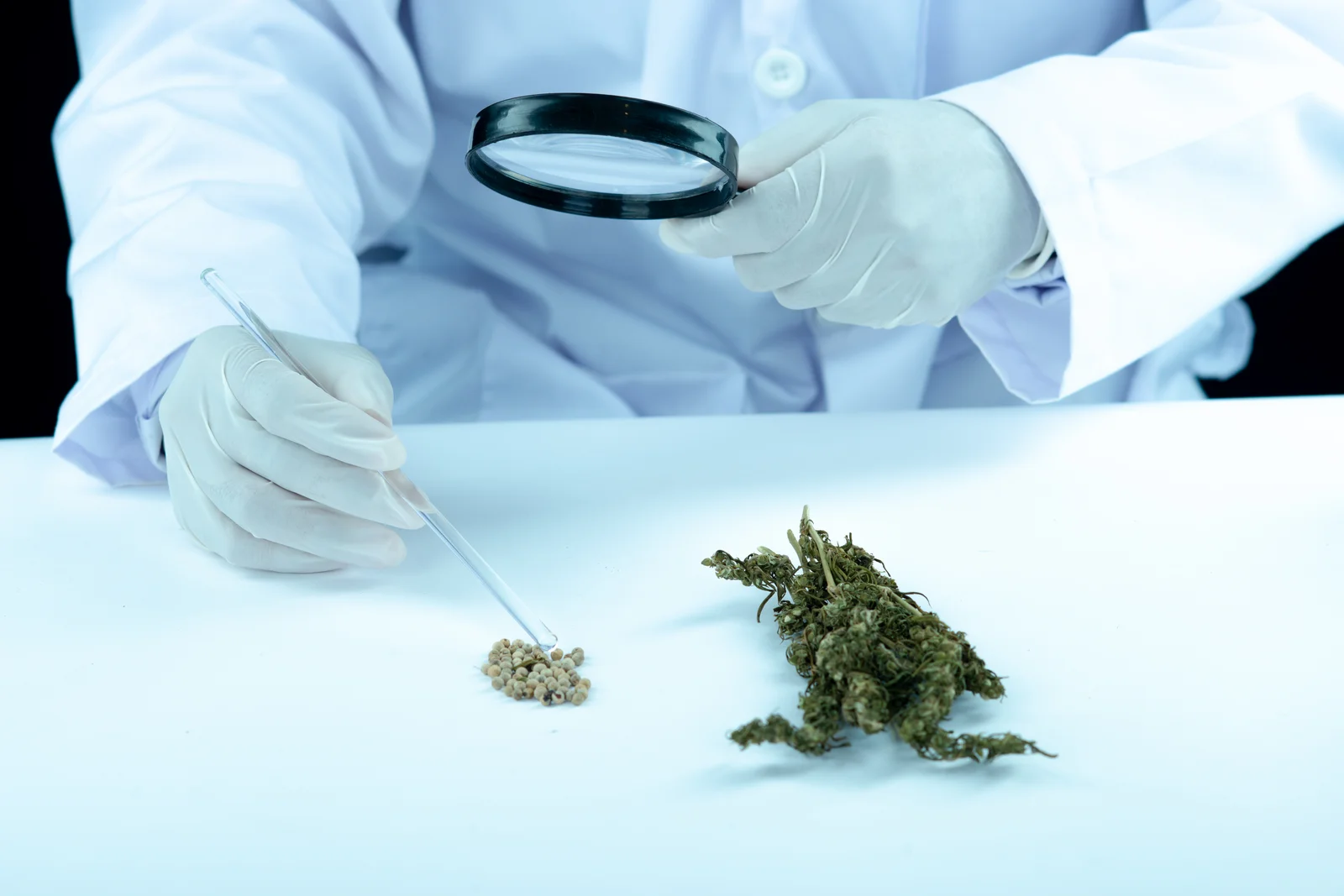In the world of horticulture, ‘cloning cannabis’ has gained significant traction as a technique that allows cultivators to replicate their most successful plants with precision. By creating strong genetic copies through cloning, growers can ensure uniformity in plant quality, maintain consistency in desired traits, and potentially increase their yield. In this article, we delve into the process of cannabis cloning, offering a step-by-step guide to successfully taking cannabis cuttings, managing root development time, and ensuring optimal mother plant care.
Understanding Cannabis Cloning
Cloning cannabis is a propagation method that involves creating genetically identical plants from a single ‘mother plant.’ This approach not only preserves the desired characteristics of exceptional plants but also accelerates the propagation for weed cultivation. Here’s how to achieve this with ease and precision.

1. Selecting the Right Mother Plant
The first step in cloning cannabis is choosing a healthy, vigorous mother plant. This plant should exhibit the traits you wish to replicate, such as high potency, robust growth, and disease resistance. A well-maintained mother plant is crucial, as it will dictate the quality of the cuttings.
Tips for Mother Plant Care:
- Optimal Light Conditions: Ensure the mother plant receives 18 hours of light per day to prevent it from flowering prematurely.
- Nutrient Management: Use a balanced fertilizer and regularly check pH levels to promote healthy growth.
- Regular Pruning: Prune the plant to encourage bushy growth, providing more potential cutting sites.
2. Taking Cannabis Cuttings
Timing and technique are critical when taking cannabis cuttings. Choose new growth for cuttings, as younger tissues tend to root faster.
Cutting Process:
- Tools and Hygiene: Use sharp, sterilized scissors or a razor blade to prevent plant disease.
- Location and Angle: Select branches with at least two nodes and cut them at a 45-degree angle to increase the rooting surface area.
- Immediate Environment: Place the cuttings in water immediately to prevent air embolism.
3. Promoting Root Development
Root development time can vary, but typically, it takes 7 to 14 days for cannabis cuttings to develop a robust root system.
Enhancing Root Formation:
- Rooting Hormone: Dip the cut end into a rooting hormone to stimulate root growth.
- Humidity and Temperature: Maintain a high humidity environment (around 70-80%) and a temperature between 72-77°F (22-25°C) for optimal root development.
- Medium Selection: Use a suitable medium like rockwool cubes, jiffy pellets, or aeroponic units.
4. Transitioning to Soil or Hydroponics
Once roots are well-developed, it’s time to transplant the clones into soil or a hydroponic setup.
Key Considerations:
- Gradual Acclimatization: Gradually reduce humidity to prepare the clones for their new growing environment.
- Nutrient Solution: Start with a mild nutrient solution to support further growth without overloading the young plants.
Frequently Asked Questions About Cloning Cannabis
How many times can you clone from the same mother plant?
The number of cuttings you can take depends on the plant’s health and vigor. Typically, a healthy mother can provide cuttings for several cycles before showing signs of strain.
What are common problems during cloning?
Common issues include mold, wilting, and slow root development, often due to excessive moisture, poor hygiene, or unsuitable environmental conditions.
Is cloning cannabis legal?
This varies by jurisdiction; always check local laws before proceeding with cloning cannabis.
Cloning cannabis is an effective way to propagate your plants and ensure the consistency and quality of your crop. Below are some commonly asked questions about the process, along with detailed answers to guide you.

What is the process to clone cannabis successfully?
Cloning cannabis involves taking a cutting from a healthy mother plant and encouraging it to develop roots, essentially creating a genetic copy of the parent. Here’s a step-by-step guide:
Step 1: Select a Healthy Mother Plant
- Choose a mother plant that is healthy, vigorous, and represents the qualities you wish to replicate.
- Ensure it is in the vegetative growth stage, as fully mature or flowering plants may clone less effectively.
Step 2: Prepare Your Workstation
- Clean and sterilize all tools and surfaces to prevent contamination.
- Gather all materials (see section below).
Step 3: Take a Cutting
- Using sterilized scissors or a razor blade, take a cutting from the mother plant. Aim for a branch that is about 4–8 inches long with a few nodes.
- Cut at a 45-degree angle to increase the rooting surface.
Step 4: Prepare the Cutting
- Trim away the lower leaves, leaving one or two sets of leaves at the top.
- Optionally, lightly scrape the stem near the cut to encourage root growth.
Step 5: Rooting Hormone and Planting
- Dip the cut end into a rooting hormone to promote root development.
- Immediately plant the cutting into a growing medium such as rock wool, coco coir, or soil.
Step 6: Create the Right Environment
- Place the cuttings in a humidity dome to maintain high humidity, which is crucial for root growth.
- Provide indirect light and maintain temperatures between 70-75°F (21-24°C) to foster optimal conditions for rooting.
Step 7: Monitor and Maintain
- Keep the growing medium moist but not waterlogged.
- After 7-14 days, the cuttings should begin to root. Once roots are established, gradually acclimatize the plants to lower humidity.
2. How can I create strong genetic copies of cannabis plants?
- Healthy Mother Plant: Ensure the mother plant is frequently pruned, well-fed, and disease-free.
- Quality Tools: Use sharp, sterilized tools for clean cuts.
- Rooting Environment: Provide stable temperature, humidity, and lighting conditions to encourage robust rooting.
3. What materials are required for cloning cannabis?
To clone cannabis, you’ll need the following materials:
- Healthy Mother Plant: The source of your genetic material.
- Sharp, Sterilized Scissors or Razor Blade: For taking clean cuttings.
- Rooting Hormone: Available in gel or powder form to stimulate root growth.
- Growing Medium: Options include rock wool, coco coir, or soil.
- Humidity Dome: To maintain high humidity around the cuttings.
- Grow Lights: Provide indirect light or use fluorescent lights for best results.
- Thermometer and Hygrometer: To monitor environmental conditions.
4. What are the benefits of cloning cannabis over growing from seeds?
- Genetic Consistency: Cloning produces identical genetic duplicates, ensuring uniformity in growth and harvest.
- Predictability: Desired traits such as potency, flavor, and resilience are reliably replicated.
- Time-Efficient: Clones skip the seedling stage, reducing the overall growth cycle time.
- Cost-Effective: Eliminates the need to purchase seeds and the uncertainty associated with germination.
Cloning cannabis is a rewarding process that, when done correctly, ensures a reliable and consistent crop. With careful attention to detail and environment, you can achieve strong and healthy clones that reflect the best qualities of your favorite strains.
Conclusion
Cloning cannabis is a powerful propagation method that enables consistency and control over your cannabis garden. By carefully selecting a mother plant, properly taking cannabis cuttings, and managing root development time, you can create a thriving crop of strong genetic copies. Whether you’re an experienced cultivator or a newcomer to cannabis growing, mastering the art of cloning will enhance your cultivation prowess and yield success. Remember, consistency and attention to detail in each step are key to a successful propagation for cannabis.
Streamline Cannabis CultivationRecommended For You
Unmasking Nature’s Signals: Decoding the Secret Language of Cannabis Leaf Problems
December 11, 2025GrowerIQ’s Rapid Harvesting Tool: The Fastest, Most Accurate Way to Capture Cannabis Harvest Data
December 11, 2025Unveiling the Future: How Cannabis Industry Events are Shaping Tomorrow’s Innovations and Partnerships
December 10, 2025About GrowerIQ
GrowerIQ is changing the way producers use software - transforming a regulatory requirement into a robust platform to learn, analyze, and improve performance.
To find out more about GrowerIQ and how we can help, fill out the form to the right, start a chat, or contact us.


